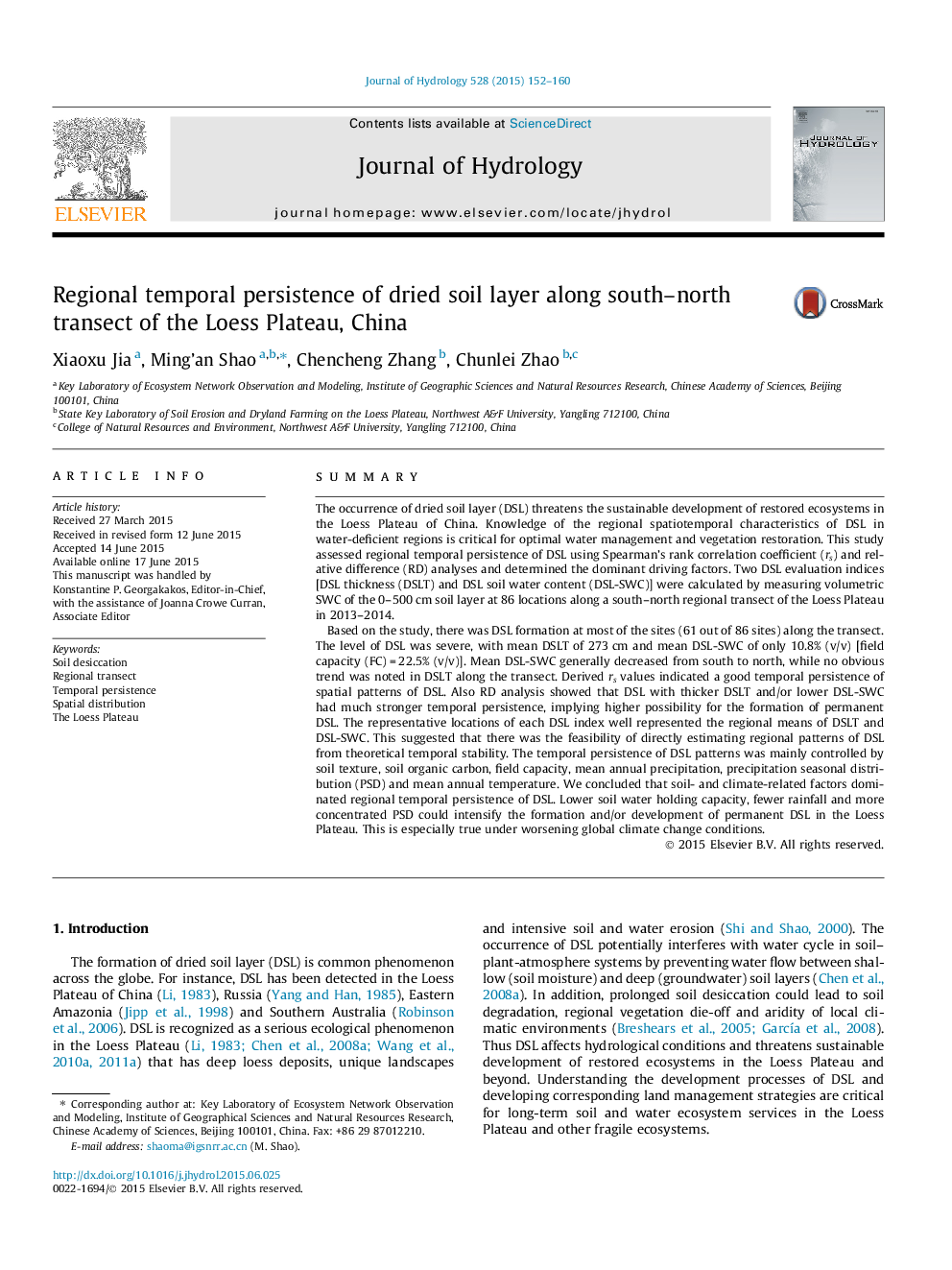| Article ID | Journal | Published Year | Pages | File Type |
|---|---|---|---|---|
| 6410882 | Journal of Hydrology | 2015 | 9 Pages |
Abstract
Based on the study, there was DSL formation at most of the sites (61 out of 86 sites) along the transect. The level of DSL was severe, with mean DSLT of 273Â cm and mean DSL-SWC of only 10.8% (v/v) [field capacity (FC)Â =Â 22.5% (v/v)]. Mean DSL-SWC generally decreased from south to north, while no obvious trend was noted in DSLT along the transect. Derived rs values indicated a good temporal persistence of spatial patterns of DSL. Also RD analysis showed that DSL with thicker DSLT and/or lower DSL-SWC had much stronger temporal persistence, implying higher possibility for the formation of permanent DSL. The representative locations of each DSL index well represented the regional means of DSLT and DSL-SWC. This suggested that there was the feasibility of directly estimating regional patterns of DSL from theoretical temporal stability. The temporal persistence of DSL patterns was mainly controlled by soil texture, soil organic carbon, field capacity, mean annual precipitation, precipitation seasonal distribution (PSD) and mean annual temperature. We concluded that soil- and climate-related factors dominated regional temporal persistence of DSL. Lower soil water holding capacity, fewer rainfall and more concentrated PSD could intensify the formation and/or development of permanent DSL in the Loess Plateau. This is especially true under worsening global climate change conditions.
Related Topics
Physical Sciences and Engineering
Earth and Planetary Sciences
Earth-Surface Processes
Authors
Xiaoxu Jia, Ming'an Shao, Chencheng Zhang, Chunlei Zhao,
